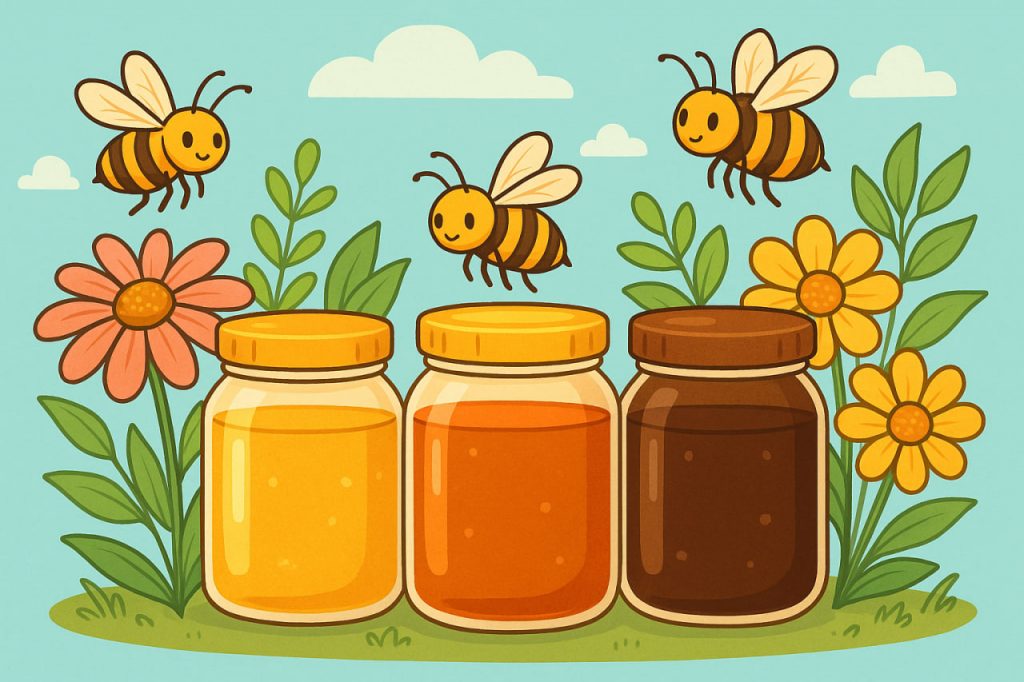Honey is not always golden or amber. In fact, its color can range from almost transparent to very dark brown, depending on several natural factors. The variation in honey color is closely tied to the type of flowers the bees collect nectar from, as well as the way the honey is processed and stored.
Natural Color Variations
- Light honey – almost clear to pale yellow, usually mild in flavor. Common in clover or acacia honey.
- Golden to amber honey – the most common color, with a balanced flavor and aroma.
- Dark honey – deep amber to brown, often stronger in taste and richer in minerals. Examples include buckwheat and chestnut honey.
- Rare colors – honey can sometimes appear greenish or reddish due to unusual floral sources or mineral content.
Why Honey Differs in Color
- Flower Source – Different plants produce nectar with different pigments and mineral contents. For example, linden honey is light, while buckwheat honey is dark.
- Mineral Content – Dark honeys usually contain more iron, magnesium, and potassium, giving them a deeper color.
- Processing and Storage – Fresh honey is usually lighter. Over time, honey naturally darkens due to oxidation. Heat exposure can also change its color.
- Moisture and Sugar Composition – Higher levels of glucose or fructose can affect the transparency and shade of honey.
Does Color Affect Quality?
The color of honey does not necessarily determine its quality. Both light and dark honeys have unique flavors and health benefits:
- Light honey is often milder and sweeter.
- Dark honey tends to be richer in antioxidants and minerals.
Conclusion
Honey comes in many shades, from pale yellow to dark brown, depending on flower type, mineral content, and storage conditions. Each color tells a story about its origin and composition, making honey one of the most diverse and fascinating natural foods.
Glossary
- Nectar – sugary liquid collected by bees from flowers.
- Oxidation – a natural process that darkens honey over time.
- Minerals – natural elements like iron and potassium that affect honey’s color.
- Antioxidants – compounds that protect cells from damage.
- Floral source – the type of flowers that provide nectar for honey.


